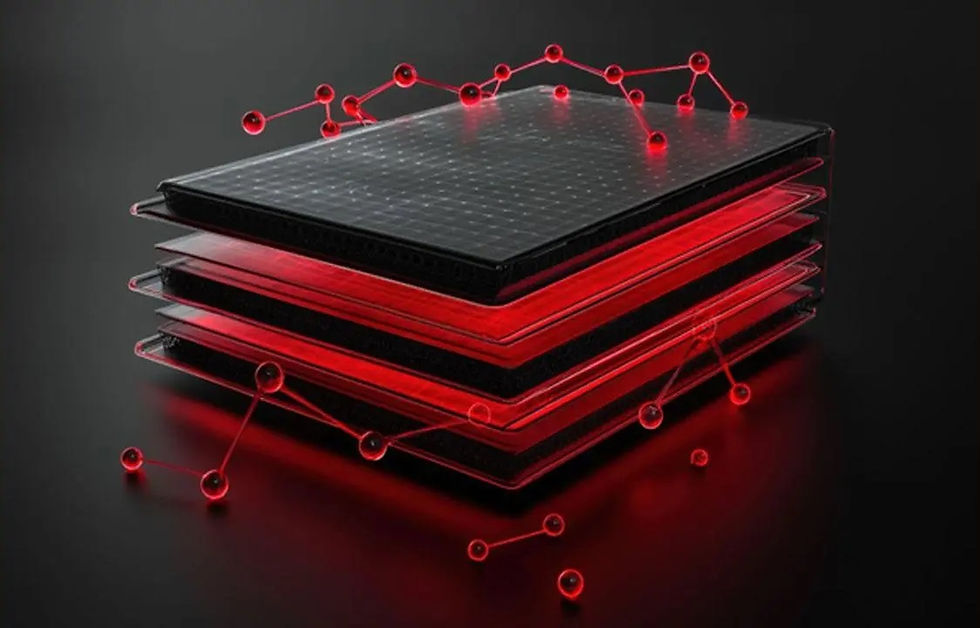Neutrinoelectricity - a solution has been found for generating electricity under the influence of a flow of neutrinos and other radiation
- https://dni24.com
- Aug 1
- 4 min read
Neutrinoelectricity is an applied concept related to the use of neutrinos to generate electricity. The basic idea of neutrinoelectricity is to create devices that can capture and convert neutrino energy into electrical energy, since neutrinos are produced in large quantities as a result of nuclear reactions such as those that occur in the Sun and in nuclear reactors, and to apply these devices in everyday life.
Neutrinoelectricity attracts the attention of scientists because of its potential to provide a clean and virtually inexhaustible source of energy. Unlike traditional sources such as fossil fuels or even nuclear energy, neutrinos are not burdened with problems of waste and pollution. The idea is to develop special materials or devices that could capture these particles and convert their kinetic energy into electrical current.
However, there are significant issues with implementation. Since neutrinos interact very weakly with matter, they are much more difficult to detect and capture than, for example, photon radiation. Most modern experiments on neutrinos focus on their detection and fundamental properties, rather than their use for energy purposes.
However, research in this area can lead to new discoveries in particle physics and expand the prospects for creating new technologies that can change the approach to energy production. Scientific developments and theoretical justifications continue to develop, and the first practical solutions have already been developed to implement this idea. First and foremost, we are talking about the developments of the Neutrino Energy group of companies led by mathematician Holger Thorsten Schubart.

In addition to the scientific and technical challenges, the long-term study of neutrinoelectricity required an interdisciplinary approach from Neutrino Energy, bringing together physicists, engineers and specialists in the field of materials science. The result of the work was the creation of a nanomaterial that could interact with neutrinos more effectively. An important aspect of Neutrino Energy's activities was the pooling of investment and research resources necessary for the development of the technology, which was called Neutrinovoltaic.
According to Holger Thorsten Schubart and the press center of the Neutrino Energy holding, a group of international researchers and engineers has now achieved significant results that have shown that neutrinoelectricity can change not only the energy landscape, but also the possibilities for creating sustainable and clean energy sources, which is especially relevant in the context of global problems associated with climate change and the depletion of traditional resources.
The practical results obtained in the study of neutrinoelectricity have led to the rapid transformation of scientific discoveries into applications and innovations. One of the important aspects will be the development of standards and protocols for testing and commercialization of the latest technology of electric power generation.
It is also worth noting that at the initial stages of the development of Neutrinovoltaic technology, significant investments in infrastructure for experimental research were required. In addition, in the process of scientific discussions with specialists in the field of neutrino studies, scientists of the Neutrino Energy group of companies came to the conclusion that it is more correct to talk about the impact on the invented multilayer nanomaterial not only of neutrinos, but also of other particles of surrounding radiation of the invisible spectrum.

From the energy policy point of view, the successful implementation of neutrinoelectricity will lead to a change in the energy dependence of countries, reducing the need for fossil fuels and improving the energy balance on the planet. This will be an important step towards sustainable development and providing future generations with clean and affordable energy.
Thus, neutrinoelectricity has the potential not only to profoundly change the fundamental principles of physics, but also to transform the energy system of the entire world. Research successes promise to open new horizons in both science and applied technologies, contributing to the creation of a more harmonious interaction between man and nature.
One of the promising areas of application of neutrinoelectricity will be energy, electric transport, water and air transport. Neutrinos and other invisible spectrum radiation field particles, as potential energy sources, have their own unique advantages, such as low waste and the ability to generate electric current in the base mode, regardless of weather conditions, without carbon emissions, which is especially important in the context of global efforts to combat climate change and transition to more sustainable energy sources.
Neutrino Energy Group has already created and is undergoing pre-industrial testing of fuel-free graphene generators Neutrino Power Cubes, which are designed for both individual use and operation as part of a power grid, including one isolated from the centralized power supply, which is important for remote settlements where it is economically impractical to extend power lines.
Also, the experimental design work on the self-charging electric vehicle Pi Car project is being finalized, which shows the technical feasibility of the idea of developing an electric vehicle that itself "draws" energy from the surrounding space sufficient for its movement. The first prototype of the Pi Car electric vehicle is planned to be presented in the near future.
In addition, neutrinos can become the basis for creating new technologies in the field of communications and computing. The ability to transmit information using neutrinos promises protection from interception, since the particles have virtually no effect on the environment. This opens up prospects for the development of innovative data transmission systems that will be safer and more efficient.
Work is also ongoing to adapt Neutrinovoltaic technology for the needs of water transport (Pi Nautic project) and air transport (Pi Fly project).
Despite all the advantages, neutrinoelectricity also faces certain challenges. It is necessary to solve a number of technical problems, such as the creation of technology and equipment for the cheap and efficient application of single-atom layers of graphene and other applied chemical elements that are part of the nanomaterial and applied to a metal substrate.
A relatively new field of technology requires an interdisciplinary approach that unites physicists, engineers, ecologists and energy specialists. This cooperation can contribute to the selection of more holistic solutions that take into account all possible aspects of the development and implementation of neutrinoelectricity.
Nevertheless, the first promising steps have been taken in mastering a fundamentally new technology, the potential of which is difficult to overestimate. Its practical implementation will lead to an economic transformation of the energy system and a humanitarian reassessment of energy supply processes on the planet.
Author: Rumiantcev L.K.




















































Comments